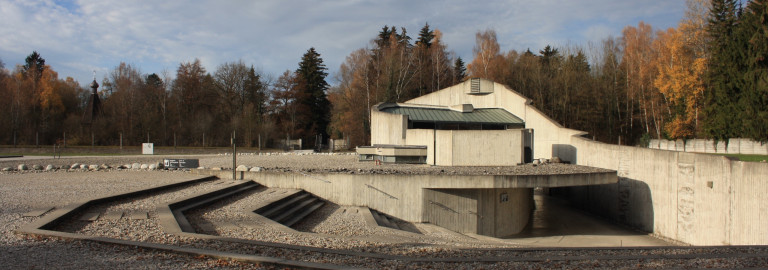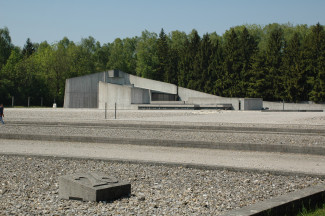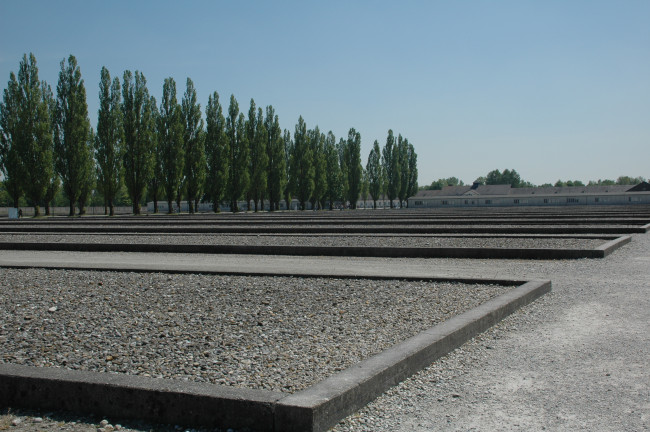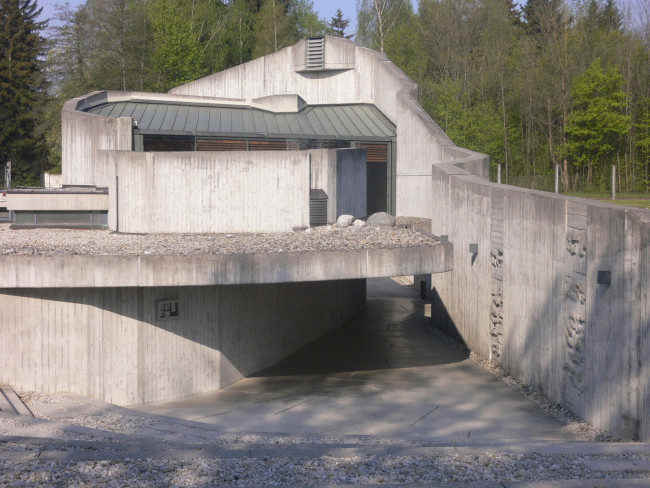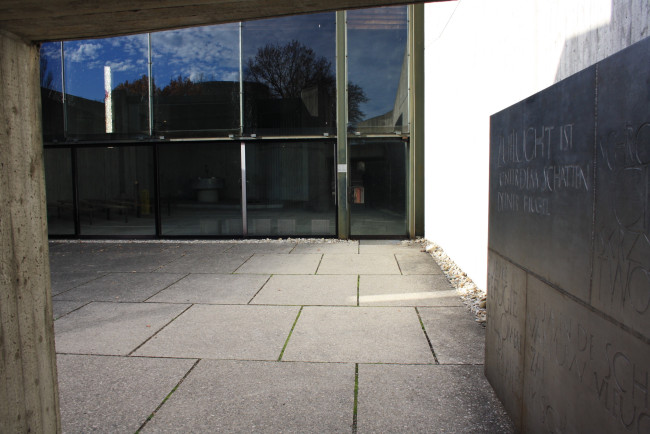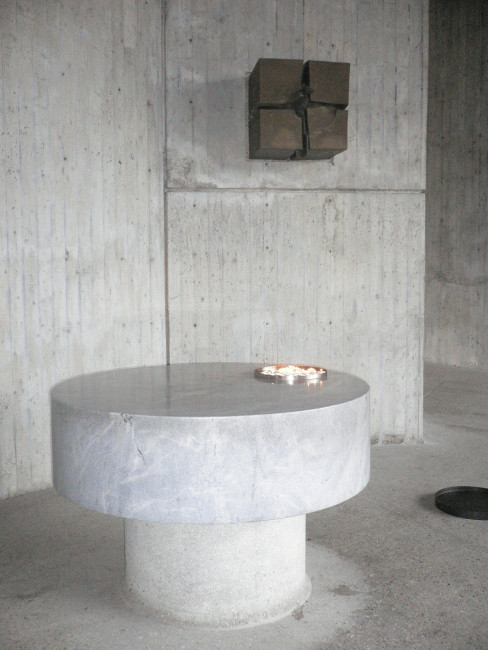A church...
here on the grounds of a former concentration camp - many visitors are astonished. Astonishment increases when considering history
of the church during the Nazi period, because it was only to a low degree a history of resistance.
But former prisoners from abroad, especially from the Netherlands, wanted to get this church and together with the Ecumenical World Congress of Churches they made their German fellow christians join them.
So in 1967 the Protestant Church in Germany built the Church of Reconciliation on the area of the former concentration camp. Two volunteers of 'Aktion Sühnezeichen / Friedensdienste' (Expiation Initiative / Services for Peace), a secretary, a deacon, and a parish priest are working there in close partnership with a catholic pastor. Predominantly they try to help visitors at their public meeting room, they offer guided tours and courses, and celebrate a service every Sunday on 11 a.m..
The right angle...
When entering the church you may notice two design features. First of all, right angles are missing. They are missing at a site where otherwise right angles were very determining. The camp, the roll call square, the whipping block, many foundations - everywhere right angles were predominant.
The architect of the church, Prof. Helmut Striffler from Mannheim regarded the right angle as a sheer symbol of the Nazi murder system. Heinrich Mann once was speking of the "exactness within the dreadful": Architectural design of the Church of Reconciliation is meant as a distinct contrast to right-angled terror devices.
The path...
The second design feature: This church is arranged like a path leading gradually downwards - a symbol of suffering and death, but also of protest and resistance. And it may also symbolize shame, as if the ground would open up and swallow you. Depth can frighten or threaten you, but also be a shelter or protection.
It's important that experience of depth doesn't destroy you. Out of the depths a person may complain, may weep, may cry, may pray. "Out of the depths, Lord I cry to you ..." These first words of psalm 130 from the Hebrew Bible are engraved on the wall.
Depth...
At the inner courtyard, connecting the room for services to the room for talks, at the very bottom of the path you suddenly encounter the right angle. It reminds us of a site not far away at Hebertshausen, where the SS installed a concrete butt for bullets. Thousands of Russian prisoners of war have been murdered there, we should never forget them
The cross...
Signs of conquest are presented only unobtrusively. No euphemism, no playing down. Only here and there an indication of the existence of something like liberation, reconciliation, redemption. Perhaps you may cast a glance at the cross protruding from the wall. You realize a figure being crushed by the surrounding load.
But you may detect a different motion as well: A figure bursting open this load. Resistance and resignation, Good Friday and Easter Sunday.

